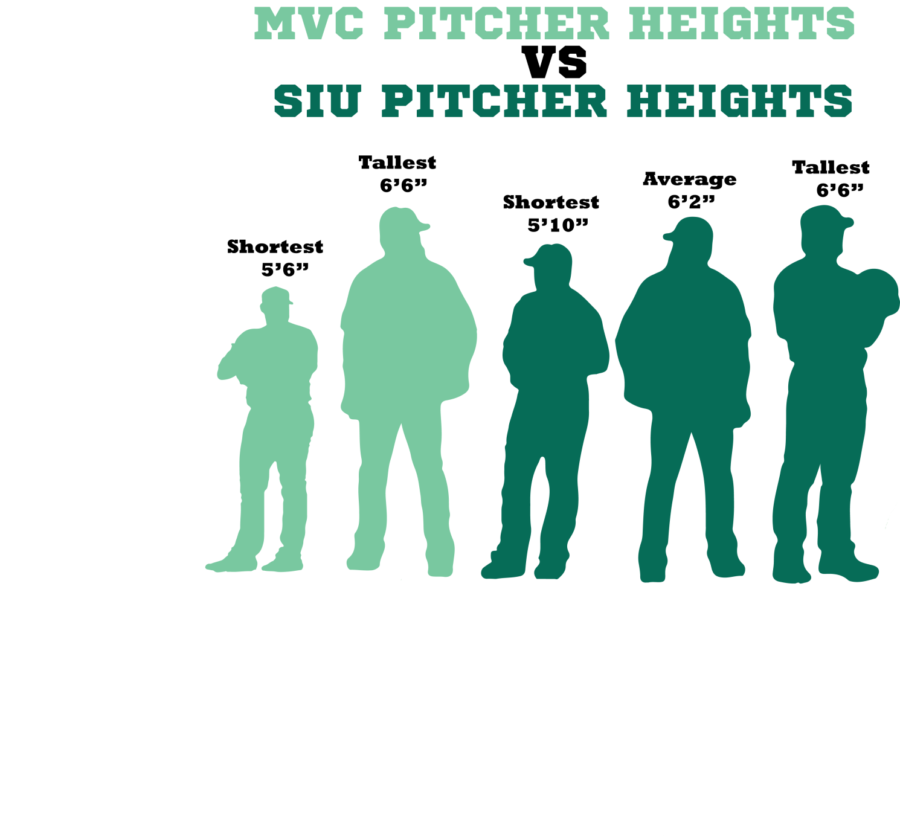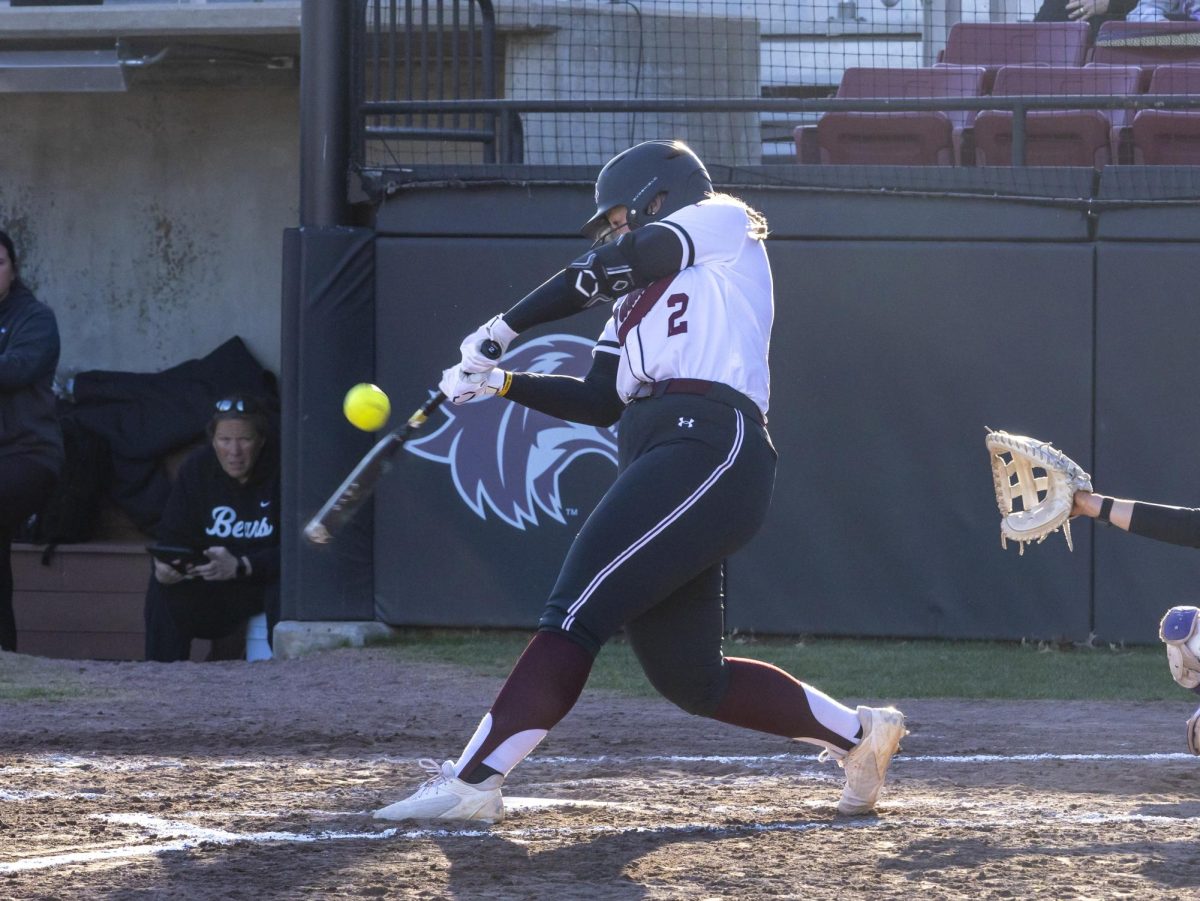Pitchers vary in size more than other positions
May 13, 2015
The average professional horse jockey is roughly 5 feet 2 inches; the average height of an NBA starting center is 7 feet. A pitcher in baseball could be anything in between.
But is there an advantage for a pitcher being tall or short? The answer is not as concrete as a center being tall or a jockey being small.
MLB Hall of Fame pitchers Randy Johnson and Greg Maddux are 6 feet 10 inches and 6 feet respectively. Both earned more than 300 wins and had ERAs below 3.50. Maddux is ranked as the fifth-best pitcher on BaseballReference.com, Johnson the seventh.
Advertisement
SIU pitching coach P.J. Finigan said taller pitchers have more of a downward angle throwing, which is advantageous.
“It’s not always an exact science,” Finigan said. “There are guys that are 6-foot or under that can sink the ball and miss the barrel, but that’s the big advantage that the bigger guys can be more downhill.”
However, Finigan said 6 feet 5 inches and above can hurt a pitcher’s consistency.
“You start to find guys that are a little less coordinated,” he said. “It’s harder for them to repeat their delivery. If it’s hard to repeat their delivery, that’s when you can get some injuries but also just inconsistency.”
SIU redshirt freshman Jack Granath, who is tied as the tallest pitcher in the Missouri Valley Conference at 6 feet 6 inches, agreed the leverage his longer arms have gives him an advantage.
“If you asked any of the shorter guys, they’d all say they wouldn’t mind being my height,” he said. “I think it’s an advantage.”
Finigan said shorter pitchers are often overlooked. He said he has heard stories of programs not recruiting pitchers shorter than 6 feet 2 inches.
Advertisement*
“I could care less if a guy is 5 [feet] 5 [inches,] if he can get it done and I think he can get it done, we’ll recruit him.”
Finigan said generally the staff recruits taller pitchers, but it isn’t a make or break point. He said he likes to give smaller pitchers a chance if they are good because he was a smaller pitcher himself at 6 feet.
He had a 9-3 record with a 3.24 ERA and 107 strikeouts in 105 innings his senior season at SIU, which led to the Detroit Tigers drafting him in the seventh round in 2005.
Freshman pitcher Ryan Netemeyer is tied as the shortest pitcher on SIU’s team at 5 feet 10 inches. He said pitching skill is dependent on speed.
“If you have a shorter body and you have a shorter arm, you can make up for it,” he said.
Netemeyer said pitchers have more variance in size than other positions.
“First basemen and third basemen are usually bigger guys,” Netemeyer said. “Outfielders are faster guys and middle infielders are more skilled guys, so usually shorter.”
Granath also played first base in high school. Netemeyer was also a middle infielder.
Aaron Graff can be reached at Agraff@dailyegyptian.com or at 536-3311 ext. 256.
Advertisement










